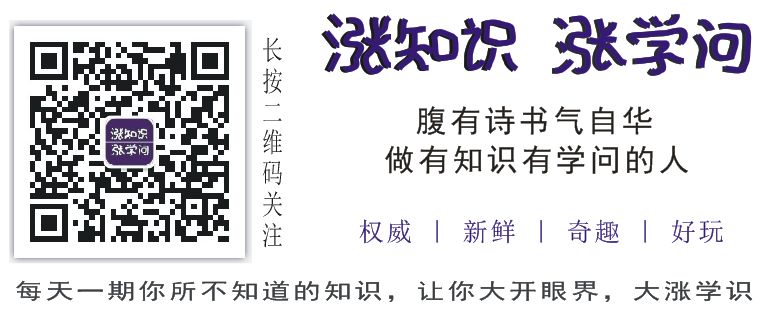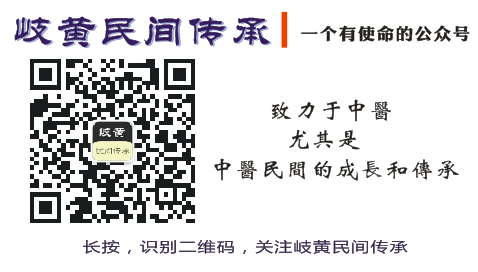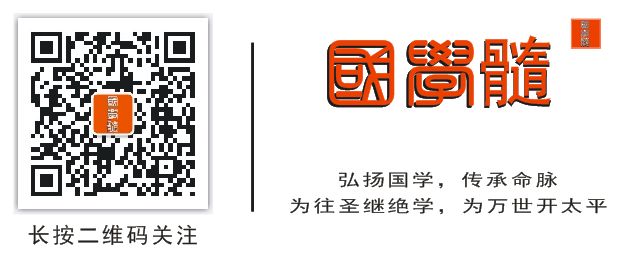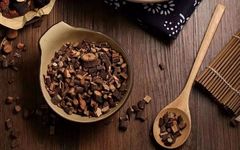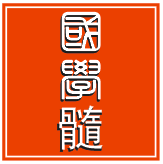
Promoting Traditional Culture, Inheriting the Lifeblood
Continuing the teachings of the sages, opening peace for all generations

The Qi Huang (Yellow Emperor) medicine holds a crucial and significant position in traditional culture, being an inseparable part of it. Throughout the long river of history, it has condensed the wisdom of the Chinese people, making significant contributions over five thousand years, safeguarding the historical process of various eras, resisting and overcoming disasters, allowing the Chinese nation to thrive to this day. In this long historical flow, a vast amount of medical civilization has accumulated and settled, becoming a brilliant pearl. Sharing Qi Huang medicine daily aims to inherit and promote it, better benefiting humanity.

Any combination of herbs that nourishes and replenishes blood to treat blood deficiency syndromes is collectively referred to as blood tonics.This type of formula is suitable for symptoms such as dizziness, blurred vision, pale complexion, pale lips, brittle nails, palpitations, insomnia, dry stools, irregular menstrual cycles in women, scanty and pale menstrual flow, thin and rapid pulse or thin and rough pulse, pale red tongue, and slippery and scanty coating.These formulas often include ingredients such as Shu Di Huang (Rehmannia glutinosa), Dang Gui (Angelica sinensis), Bai Shao (Paeonia lactiflora), and E Jiao (Donkey-hide gelatin), with representative formulas like Si Wu Tang (Four Substance Decoction), Gui Pi Tang (Restore the Spleen Decoction), and Dang Gui Bu Xue Tang (Dang Gui Blood Nourishing Decoction).1. Si Wu Tang (Four Substance Decoction) from “Tai Ping Hui Min He Ji Ju Fang”Ingredients: Dang Gui (Angelica sinensis) without the root, wine-soaked and stir-fried (10g), Chuan Xiong (Ligusticum chuanxiong) (8g), Bai Shao (Paeonia lactiflora) (12g), Shu Di Huang (Rehmannia glutinosa) wine-soaked and steamed (12g) each.Dosage: Grind into a coarse powder, take three qian (approximately 9g), boil with one and a half cups of water until reduced to eight parts, strain and take warm before meals. If there is instability in pregnancy with bleeding, add Ai Ye (Artemisia argyi) ten leaves and one piece of E Jiao, and decoct as before.Or if there is blood deficiency with cold, excessive bleeding, also add E Jiao and Ai Ye for decoction (modern usage: as a soup, decoct three times, taken on an empty stomach in the morning, noon, and evening).Function: Nourishes and regulates blood.Indications: Deficiency of Chong and Ren channels. Irregular menstruation, abdominal pain, excessive bleeding, blood stasis with hard masses, occasional pain. Instability in pregnancy with continuous bleeding, and postpartum lochia not expelling, forming masses, and pain in the lower abdomen with intermittent chills and fever.Formula Analysis: This formula is the primary formula for nourishing blood and regulating menstruation, derived from the “Jin Gui Yao Lue – Women’s Pregnancy Chapter” by removing E Jiao, Ai Ye, and Gan Cao (Licorice). It serves as a foundation for various blood deficiency syndromes, adjusted according to symptoms.Chong is the sea of blood, and Ren governs the uterus. If the Chong vessel is deficient, women will experience scanty menstrual flow, pale color, and delayed periods.Additionally, if there is cold stagnation in the lower jiao, abdominal pain will occur. If the spleen is deficient and cannot hold blood, or if the kidney is deficient and the Chong and Ren are unstable, symptoms such as excessive bleeding may also occur.Moreover, if there is liver cold and blood stagnation, leading to poor blood circulation and stasis, hard masses may also appear, causing pain in the lower abdomen and around the navel.This formula uses Dang Gui to nourish and invigorate blood; Shu Di Huang primarily nourishes blood; Chuan Xiong regulates the qi in the blood; Bai Shao nourishes blood and astringes yin. Thus, the entire formula belongs to blood-nourishing herbs. However, the combination is appropriate, nourishing blood without causing stagnation, moving blood without breaking it, with a balance of nourishing and dispersing, forming a key formula for treating blood issues.Modification:1. If there is cold in the blood with menstrual pain, consider adding Pao Jiang (dried ginger), Gui Zhi (Cinnamon twig), Wu Yao (Lindera aggregate), Zhi Ke (Bitter orange), Xiang Fu (Cyperus rotundus), Sang Ji Sheng (Mulberry mistletoe), and Xu Duan (Dipsacus asperoides) to warm cold, regulate qi, move blood, and relieve pain.2. If there is bleeding during pregnancy, add E Jiao, wine-fried Ai Ye, and roasted Gan Cao to create “Xiong Gui Jiao Ai Tang”.3. If there is blood stasis, add Dan Shen (Salvia miltiorrhiza), Tao Ren (Peach kernel), and Hong Hua (Carthamus tinctorius) to move blood and eliminate stasis.4. If there is blood deficiency with heat, add Huang Qin (Scutellaria baicalensis) and Dan Pi (Moutan root).5. If there is qi deficiency unable to hold blood, add Lu Dang Shen (Codonopsis pilosula), Huang Qi (Astragalus membranaceus), and Bai Zhu (Atractylodes macrocephala).In summary, this formula can be adjusted according to various blood syndromes.2. Sheng Yu Tang (Holy Recovery Decoction) from “Yi Zong Jin Jian”Ingredients: Shu Di Huang (Rehmannia glutinosa) 7.5 qian (20g), Bai Shao (Paeonia lactiflora) mixed with wine, 7.5 qian (15g), Chuan Xiong (Ligusticum chuanxiong) 7.5 qian (8g), Ren Shen (Ginseng) 7.5 qian (15g) (generally use Lu Dang Shen 20g), Dang Gui (Angelica sinensis) washed with wine, 5 qian (15g), Huang Qi (Astragalus membranaceus) 5 qian (18g).Decoct and take.Function: Tonifies qi, nourishes blood, and holds blood.Indications: Early menstruation with heavy flow, pale color, fatigue in limbs, and general weakness. This syndrome is due to qi and blood deficiency, unable to hold blood, hence the addition of Ren Shen and Huang Qi to tonify qi and hold blood.3. Tao Hong Si Wu Tang (Peach and Red Four Substance Decoction) from “Yi Zong Jin Jian”Ingredients: Shu Di Huang (Rehmannia glutinosa) 2 qian (6g) (or use Gan Di Huang 15g), Chuan Xiong (Ligusticum chuanxiong) 1 qian (3g), Bai Shao (Paeonia lactiflora) 2 qian (6g), stir-fried (10g), Dang Gui (Angelica sinensis) 2 qian (6g), Tao Ren (Peach kernel) (6g), Hong Hua (Carthamus tinctorius) (4g).Decoct and take three times a day, finishing in one day.Function: Nourishes blood, invigorates blood, and eliminates stasis.Indications: Women with early menstruation, heavy flow, purple color, thick consistency, or with clots, abdominal pain, and bloating.This formula combines the blood-nourishing properties of Si Wu Tang with the addition of Tao Ren and Hong Hua to invigorate blood and eliminate stasis. When blood stasis is resolved, menstruation can flow smoothly, and abdominal pain and bloating will subside. However, this formula is strong in its action to break blood stasis, so it should not be taken excessively, as it may lead to excessive bleeding or heavy menstrual flow.4. Dang Gui Bu Xue Tang (Dang Gui Blood Nourishing Decoction) from “Nei Wai Shang Bian Huo Lun”Ingredients: Huang Qi (Astragalus membranaceus) 1 liang (30g), Dang Gui (Angelica sinensis) 2 qian (6g), washed with wine (6g).Dosage: Grind into a single dose, decoct until one cup remains, strain and take warm before meals (modern usage: decoct three times, taken on an empty stomach in the morning, noon, and evening).Function: Tonifies qi and generates blood.Indications: Internal injury from overwork, qi weakness, blood deficiency, floating yang. Symptoms include heat in the muscles, red face, thirst, large and weak pulse, and in women, blood deficiency during menstruation or postpartum with heat and headache. Or for chronic non-healing sores.Formula Analysis: This formula is indicated for internal injury from overwork, leading to insufficient original qi, which affects yin blood, resulting in floating yang. Symptoms include heat in the muscles, red face, thirst, and large and weak pulse. Therefore, it uses a formula to tonify qi and generate blood.Since tangible blood is generated from intangible qi, this formula emphasizes Huang Qi to greatly tonify the qi of the spleen and lungs, thus enriching the source of blood; it also uses Dang Gui to nourish blood and harmonize the nutrients, allowing yang to generate yin and qi to promote blood generation.Wu He Gao stated, “Tangible blood cannot generate itself; it is generated from intangible qi” (from “Ming Yi Fang Lun”), which serves as the theoretical basis for this formula’s treatment of the root cause.For women with heat and headache during menstruation or postpartum blood deficiency, it is effective in tonifying qi and nourishing blood to reduce heat. For chronic non-healing sores, this formula can nourish qi and blood, promoting tissue regeneration and healing.The symptoms presented in this formula are quite similar to those of Bai Hu Tang, which has a large pulse, thirst, fever, and red face, but upon careful examination, there are strict distinctions between the two.Bai Hu syndrome has a large and full pulse, great thirst with a preference for cold drinks, high fever with profuse sweating, which are the characteristics of Bai Hu syndrome. In contrast, Dang Gui Bu Xue syndrome has a large but weak pulse, thirst with a preference for warm drinks, and mild heat without profuse sweating.Therefore, when using this formula, it is essential to distinguish between Yangming heat and qi weakness with blood deficiency, as well as the two aspects of floating yang. If the diagnosis is unclear, using this formula may not only be ineffective but may also lead to adverse effects of “false deficiency” or “false excess”.5. Gui Pi Tang (Restore the Spleen Decoction) from “Ji Sheng Fang”Ingredients: Bai Zhu (Atractylodes macrocephala) 1 liang (30g), Fu Shen (Poria) without wood 1 liang (30g), Huang Qi (Astragalus membranaceus) without the root 1 liang (30g), Long Yan Rou (Longan fruit) 1 liang (30g), Suan Zao Ren (Sour jujube seed) stir-fried, without shell 1 liang (30g), Ren Shen (Ginseng) 5 qian (15g), Mu Xiang (Aucklandia) without fire 5 qian (15g), Gan Cao (Licorice) stir-fried 2.5 qian (8g), Dang Gui (Angelica sinensis) 1 qian (3g), Yuan Zhi (Polygala) honey-fried 1 qian (3g) (Dang Gui and Yuan Zhi are added from “Jiao Zhu Fu Ren Liang Fang”).Dosage: Grind and take four qian (approximately 12g), boil with one and a half cups of water, add five slices of ginger and one jujube, decoct until seven parts remain, strain and take warm, without time restrictions.Modern usage: Add fresh ginger 6g, red dates 3-5 pieces, decoct and take. Alternatively, adjust the dosage ratio as above to make honey pills, each pill weighing about 15g, taken on an empty stomach, three times a day).Function: Tonifies qi, nourishes blood, strengthens the spleen, and nourishes the heart.Search for and follow the “Guoxue Sui” public account to learn more about secret TCM formulas.Indications:1. Deficiency of both heart and spleen. Overthinking and overwork injure the heart and spleen, leading to insufficient qi and blood. Symptoms include palpitations, forgetfulness, insomnia, night sweats, weakness, poor appetite, pale yellow complexion, pale tongue, thin white coating, and weak pulse.2. Spleen not governing blood. Symptoms include blood in the stool, excessive menstrual flow in women, early menstruation, pale color, or continuous dripping, or leukorrhea.Formula Analysis: This formula primarily treats the deficiency of both heart and spleen.The heart houses the spirit and governs blood, while the spleen governs thought and controls blood. Overthinking and overwork injure the heart and spleen, leading to deficiency of qi and blood, resulting in fatigue, poor appetite, and heat; heart blood is consumed, and the heart loses nourishment, leading to symptoms such as palpitations, forgetfulness, insomnia, night sweats; pale yellow complexion, pale tongue, thin white coating, and weak pulse are all signs of insufficient qi and blood.The treatment should focus on tonifying qi and nourishing blood, strengthening the spleen, and nourishing the heart.The formula includes Ren Shen, Huang Qi, Bai Zhu, Gan Cao, ginger, and jujube, which are warm and tonifying to strengthen the spleen and benefit qi; Dang Gui nourishes the liver and generates heart blood; Fu Shen, Suan Zao Ren, and Long Yan Rou calm the heart and nourish the spirit; Yuan Zhi connects the heart and kidney to calm the mind; Mu Xiang regulates qi to awaken the spleen, preventing the tonifying herbs from causing stagnation in the spleen and stomach.Thus, this formula advances both heart and spleen nourishment, integrating qi tonification and blood nourishment.The spleen governs blood and holds it; if the spleen qi is deficient, it cannot control blood, leading to blood in the stool; in women, it results in instability of the blood sea, causing excessive menstrual flow, early menstruation, or continuous dripping; if the spleen is deficient and cannot transport dampness, it leads to leukorrhea.This formula can tonify spleen qi, support spleen yang, and nourish liver blood, thus treating the aforementioned symptoms of blood in the stool, excessive menstrual flow, and leukorrhea.Modern applications of this formula include treating neurasthenia, heart disease, anemia, functional uterine bleeding, and thrombocytopenic purpura, as long as the diagnosis is heart and spleen deficiency, with adjustments made according to symptoms, it has shown significant efficacy.Gui Pi Tang was first recorded in the Song Dynasty by Yan Yonghe in “Ji Sheng Fang”, used to treat overthinking and overwork injuring the heart and spleen, forgetfulness, and palpitations.In the Yuan Dynasty, Wei Yilin expanded on this formula in “Shi Yi De Xiao Fang”, which not only recorded the original indications but also supplemented treatments for spleen not governing blood leading to spontaneous bleeding.In the Ming Dynasty, Xue Lizhai in “Jiao Zhu Fu Ren Liang Fang” added Dang Gui and Yuan Zhi to the original formula, which has been used ever since.In the Qing Dynasty, Wang Ren’an in “Yi Fang Ji Jie” further expanded its applicability, using it for palpitations, night sweats, poor appetite, women’s menstrual issues, and intestinal wind bleeding. These adaptations were gradually refined through clinical practice by later physicians.This formula shares the qi tonifying function with Bu Zhong Yi Qi Tang, but the differences lie in:1. Different combinations; this formula combines spleen tonification with heart nourishment and calming the spirit, aiming to strengthen the spleen and nourish the heart, restoring its function of governing blood and generating blood; Bu Zhong Yi Qi Tang combines spleen tonification with raising sinking yang, aiming to tonify qi and elevate, restoring its function of clearing and descending.2. Different indications; this formula primarily treats deficiency of both heart and spleen and spleen not governing blood, with symptoms of palpitations, forgetfulness, poor appetite, and blood in the stool; Bu Zhong Yi Qi Tang primarily treats spleen and stomach qi deficiency with symptoms of fever, fatigue, shortness of breath, and sinking of qi.6. Zhi Gan Cao Tang (Honey-Fried Licorice Decoction) from “Shang Han Lun”Ingredients: Gan Cao (Licorice) 4 liang (12g), honey-fried Sheng Jiang (fresh ginger) 3 liang (9g), sliced, Ren Shen (Ginseng) 2 liang (6g), Sheng Di Huang (Rehmannia glutinosa) 1 jin (30g), Gui Zhi (Cinnamon twig) 3 liang (9g), peeled, E Jiao (Donkey-hide gelatin) 2 liang (6g), Mai Men Dong (Ophiopogon japonicus) half sheng (10g), without the heart, Ma Ren (Sesame seed) half sheng (10g), and Da Zao (Jujube) thirty pieces (5-10 pieces), split.Dosage: Combine the nine ingredients with seven sheng of clear wine and eight sheng of water, first boil the eight ingredients, take three sheng, strain, and dissolve the E Jiao completely, take one sheng warm, three times a day.Modern usage: Retain E Jiao, mix the other herbs, decoct, and pour out the juice, add 10ml of clear wine. Separately, slightly boil E Jiao in water, dissolve, and mix into the herbal juice, taking in three doses, finishing in one day).Function: Tonifies qi, nourishes yin, replenishes blood, and restores pulse.Search for and follow the “Guoxue Sui” public account to learn more about secret TCM formulas.Indications:1. Qi deficiency and blood weakness. Symptoms include pulse showing knots or alternation, palpitations, weakness, shortness of breath, pale tongue, and scanty saliva.2. Deficiency labor with lung atrophy. Symptoms include dry cough without phlegm, or phlegm with little blood, thin body, shortness of breath, insomnia, spontaneous sweating or night sweats, dry throat and tongue, difficult stools, or heat during deficiency.Formula Analysis: This formula in “Shang Han Lun” is used for symptoms of “pulse knots and alternation, palpitations”. The clinical manifestation of pulse knots is as described in “Bin Hu Pulse Studies”: “Knot pulse, slow and intermittent, sometimes stopping and then returning”; “Alternating pulse, moving and then stopping, unable to return, thus moving again”.This syndrome is caused by yang deficiency unable to circulate the pulse qi, and yin deficiency unable to nourish the heart blood. Symptoms of irritability and insomnia, pale tongue with scanty saliva, are also due to insufficient yin blood. Deficiency labor with dry cough, blood-streaked phlegm, spontaneous sweating, night sweats, dry throat and tongue, and difficult stools are all due to insufficient yin fluid, leading to internal dryness damaging the lung collaterals, or yin deficiency generating heat, causing sweating to leak out.Thus, the formula uses Zhi Gan Cao, Ren Shen, and Da Zao to tonify qi and nourish the heart and spleen; Sheng Di Huang, Mai Men Dong, E Jiao, and Ma Ren sweetly moisten and nourish yin, nourish heart blood, and generate fluids.Ginger, cinnamon, and wine are all warm in nature, having the function of circulating yang and restoring the pulse, and when combined with qi and yin nourishing herbs, they can warm without drying, and also promote the flow of qi and blood, ensuring the pulse pathways are open. Together, they achieve the effects of tonifying qi, restoring the pulse, nourishing yin, and replenishing blood.For symptoms of deficiency labor with dry cough, the use of this formula is to tonify qi and nourish yin to support the lungs, but for significant yin damage with lung dryness, the warming herbs should be used cautiously or omitted, as warming herbs can deplete yin fluids.7. Jia Jian Fu Mai Tang (Modified Restore Pulse Decoction) from “Wen Bing Tiao Bian”

Ingredients: Zhi Gan Cao (Honey-fried Licorice) 6 qian (5g), Sheng Di Huang (Rehmannia glutinosa) 6 qian (20g), Sheng Bai Shao (White Peony) 6 qian (18g), Mai Men Dong (Ophiopogon japonicus) 5 qian (15g), without the heart, E Jiao 3 qian (10g), Ma Ren 3 qian (10g).Boil with eight cups of water, decoct to eight parts, take three cups, divided into three doses.If severe, add Gan Cao to one liang, and increase Sheng Di Huang and Bai Shao to eight qian, and take three times a day, one at night.Modern usage: Decoct three times a day, taken on an empty stomach in the morning, noon, and evening. The method for E Jiao is the same as in Zhi Gan Cao Tang.This formula is derived from Zhi Gan Cao Tang, removing Ren Shen, Gui Zhi, Jiang, Jujube, and wine, and adding Bai Shao to create a nourishing and softening formula.Function: Nourishes blood, astringes yin, generates fluids, and moistens dryness.Indications:Yangming bowel excess syndrome, after purging, the excess heat has been removed, but yin fluids are still deficient, presenting symptoms of “weak pulse, heat in the palms and soles more than on the back of the hands and feet”.Thus, it takes the meaning of Zhi Gan Cao Tang, removing the warming and spicy ingredients, and adding Bai Shao to create a purely yin and moistening formula.Search for and follow the “Guoxue Sui” public account to learn more about secret TCM formulas.
|
I Copyright Statement:○This content is sourced and compiled from the internet.○ Copyright belongs to the relevant rights holders. If there are any improper uses, please contact us for immediate deletion.I Submission Email:[email protected] I Warning:This platform’s articles are for the purpose of popularizing TCM knowledge and sharing learning, only for reference by professional TCM practitioners, and do not constitute any prescription, recommendation, or guidance. Please do not blindly try medications; this platform does not bear any responsibility for any consequences arising from this. If needed, please use under the guidance of a physician. All articles published by this platform only represent the author’s views. |
Recommended Reading
[Guoxue Sui]Selected excellent articles from the public account:① Traditional Chinese Painting: Teaching You to Paint Impressionistic “Cockscomb Flower and Beetle”② From Reproductive Love to Immortal Love, the Mysteries of Bedroom Techniques – Exploring the Principles of “Feng Shen Yan Yi” (Part 2)③ Zhu You Shu: The Secret Technique of Soul Retrieval[Knowledge Growth]Selected excellent articles from the public account:① The Qin Dynasty had the “Four Great Legions” to unify China; what was the final destination of the legion that swept through the six directions?② This woman had “the talent of Lü Bu but lacked Lü Bu’s evil”, ruling from behind the curtain, her life was quite legendary.③ Chiang Kai-shek’s slap created an image of a “just man” who hated evil, but why did he not dare to strike? [Qi Huang Folk Inheritance]Selected excellent articles from the public account:① The miraculous folk method of transferring sores and diseases, moving serious sores to less important areas – clinical application of the method of transferring sores and diseases.② Difficulty falling asleep, many dreams, shallow sleep, waking easily, waking at set times, and insomnia – Professor Xu Hao’s experience in diagnosing and treating insomnia.③ The Lin family’s century-old experience in treating bones: Lin Rugaos’ treatment of 188 cases of fractures with Bu Gu Wan.④ Irregular sexual life leading to premature ejaculation – Professor Li Yueqing’s clinical experience in treating male diseases combined with anxiety and depression. ⑤ Introducing an ancient secret formula – Da Cheng Dan Fang. ⑥ Treatment of gastric cancer, intestinal cancer, esophageal cancer, and other digestive tract tumors and other malignant tumors with the Phlegm-Dispersing and Mass-Removing Formula. ⑦ Self-formulated Zhen Xiong Tang for treating impotence in 76 cases, harmonizing yin and yang, addressing both deficiency and excess, a wonderful formula for tonifying and moving. ⑧ Yi Jing Zhuan Zhuang Tang for treating infertility, impotence, premature ejaculation, lumbar and knee soreness, fatigue, and weakness – Professor Wang Jinsong’s clinical insights.
For more excellent content, please check the historical articles.
